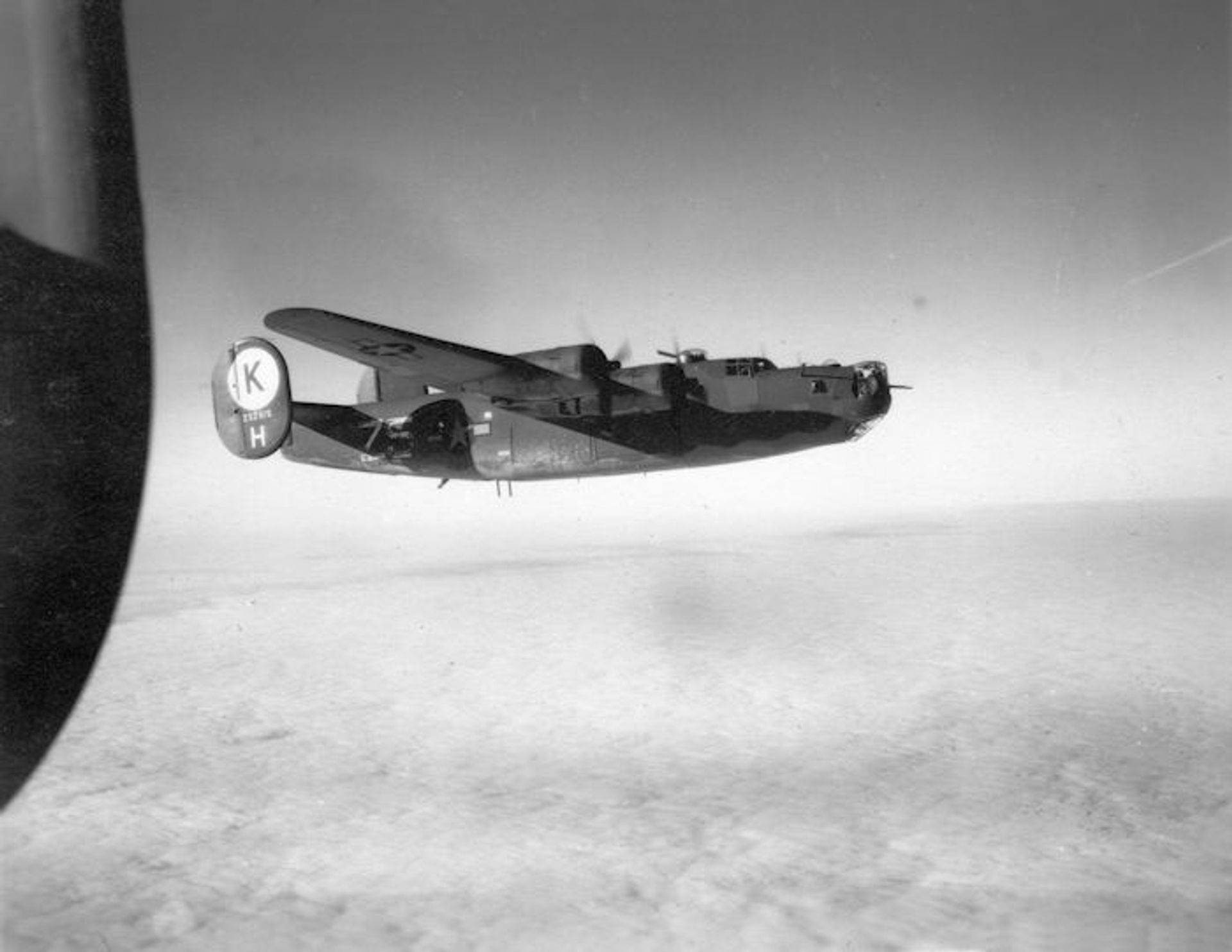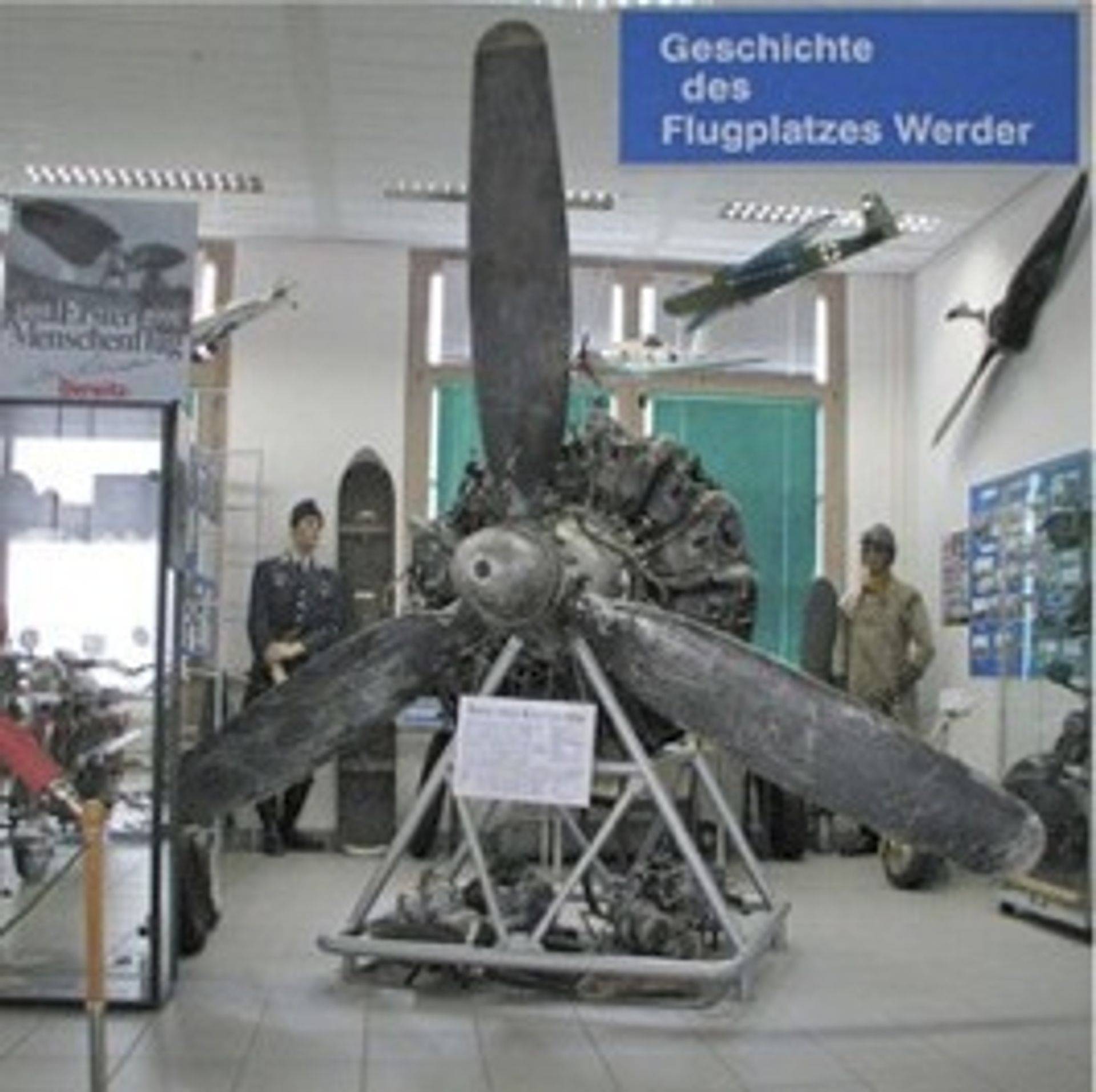458th Bombardment Group (H)
Ford’s Folly
B-24H-15-FO 42-52515 H

Shot down March 6, 1944 – MACR 3351
On March 6, 1944, the 458BG took of on its fourth combat mission of the war. 2Lt Guy C. Rogers and crew in the 754BS were assigned B-24H-15-FO 42-52515, possibly nicknamed Ford’s Folly. This was the crew’s first mission.
Their aircraft was hit by flak over Lake Gindow, about 10 miles southwest of Berlin, puncturing a fuel tank and starting a fire on the flight deck. It exploded very shortly afterwards blowing Rogers and Proteau out of the plane. The other eight crewmen never got out, the plane and crew came down in Lake Glindow, about 40km southwest of Berlin. A number of 458th crews witnessed this and told the debriefing officers about it. The bodies of several crewmen were still being found on the lake shore as late as June 1944.
Co-pilot, Lt Francis Proteau, stated that he was blown free of the ship when it exploded in mid-air. In his questionnaire on MACR 3351, Proteau stated that his last contact with Radio Operator, S/Sgt Leroy Smith was, “I told him just prior to the explosion to, ‘Get out!’, to which he replied, ‘I can’t!'” Proteau was attempting to open the top hatch to assist Engineer, S/Sgt Raymond Fiebiger out when the plane exploded.
Missions
| Date | Target | Pilot | 458th Msn | Pilot Msn | RCL | Sqdn | A/C Msn | Comments |
|---|---|---|---|---|---|---|---|---|
| 24-Feb-44 | DUTCH COAST | RAITER | D1 | -- | -- | Z5 | D1 | Diversion Mission |
| 25-Feb-44 | DUTCH COAST | SCHULZE | D2 | -- | -- | Z5 | D2 | Diversion Mission |
| 06-Mar-44 | BERLIN/GENSHAGEN | ROGERS | 4 | FTR | H | Z5 | 1 | FLAK OVER LAKE GLINDOW |
Post War Recovery

An email in September 2012 brought the following information to light:
As I adopted the grave of Sgt Marvin Lademan 458 bomb group. I found some very interesting info about the crash, eye witness report [translated below] and hopefully some pictures of the engines of Ford Follies B24…they laid down in the lake where the plane crashed. In 1999 the Germans salvaged three engines and one of them is in a museum.
Kind regards
Jan de Kock
Netherlands
“On 6 March 1944, the Americans flew the largest daylight raid on Berlin and the surrounding industrial areas. At 12.47 clock, there was general alarm in Berlin. The offensive formations consisted of four-engine B-17 (Flying Fortress), B-24 “Liberator” and long-range fighters. After the attack, about 120 machines came south out of Berlin, including over Potsdam area. There was heavy fire Flack and violent counter-attacks of the German fighters.
“At 13.45 clock flew a burning four-engine B-24 “Liberator” over the city Weder towards Glindow. Just five minutes later there was a massive explosion and the bomber crashed into the lake Glindower. Some crew members were thrown out. Two of the parachute opened just yet and landed on the land, other sank into the lake. According to the surviving pilot Rogers consisted the crew of ten men, most of them not experienced or long term trained…that why not many parachutes opened.
“The pilot landed badly injured on a piece of farmland near Petzow. Immediately there came a man on a horse under saddle and tried to kill the pilot with his horse.. Of course, the animal refused. It was the owner of the field, who was also known for his behavior and even harmless mushroom pickers drove the gun from his forest. He’s probably not escaped his punishment …
“The pilot Rogers came to interrogation by members of the airfield Werder in the air force hospital Berlin Reinickendorf. He lost his right leg after an
emergency operation and was able to recover before the war ended in January 1945 in exchange for German pilots to return to America.The second survivor, the co-pilot came Proteau, a year after the war ended with a simple car accident [actually a flying accident].”
1999 succeeded the Zweiradmuseum Werder, who had gone in search of the traces of the past, with a lot of effort and skill, volunteer help and a little luck, the rescue of three engines of the B24 from Pratt & Whitney (14-cylindrical radial engines) from approximately seven meters depth. One of these engines is now a ground monument, also documented by numerous reports in the two-wheeler and Technology Museum Werder
Crash Over Glindow

We already know that only two parachutes were sighted in the sky above Glindower See on that March 1944 day. Two temporarily saved! Eight young men were unable to leave the burning and then exploding plane alive. Seven of them were in the first enemy operation. What they knew so far were practice flights and training. Did [they] accompany fear on [their] way across the Atlantic? Did you think of your loved ones at home? They sensed that there would be no way back. How were the mothers and widows who received the prepared Air Force letters? Anyway: there were eight young lives that were wiped out there. The rubble of the “Ford’s Folly” was found in a large area. A hull fell on the island in Glindower See. To the east of the lake one of the wings was found on a meadow. Because there was still a thin ice sheet on the lake, – as in the surrounding gardens one could make out numerous smaller debris from the machine, not far from the island – where the three engines were later found – the ice was largely destroyed.
terrible certainty that his childhood friends, along with the other six comrades, had also died near this small town of Werder (Havel) – near a town he had never heard of before. What would be better, he said, than to keep in close contact with his friends’ families. He managed that until the end of his life.
Disposition
B-24H-15 FO 42-52515 FORD’S FOLLY
OD
RCL: H (754)
Original aircraft.
Lost 6 Mar 44 – crashed near Petzow, just to the west of Berlin, after being shot down by flak over the target causing the aircraft to explode. (Berlin)
(Info Courtesy: Tom Brittan)
